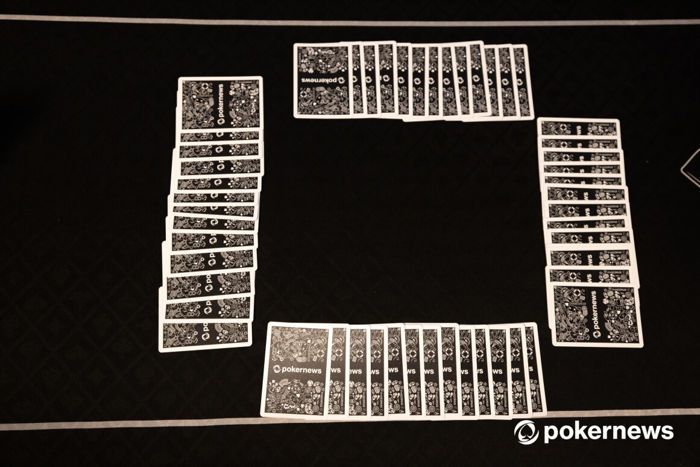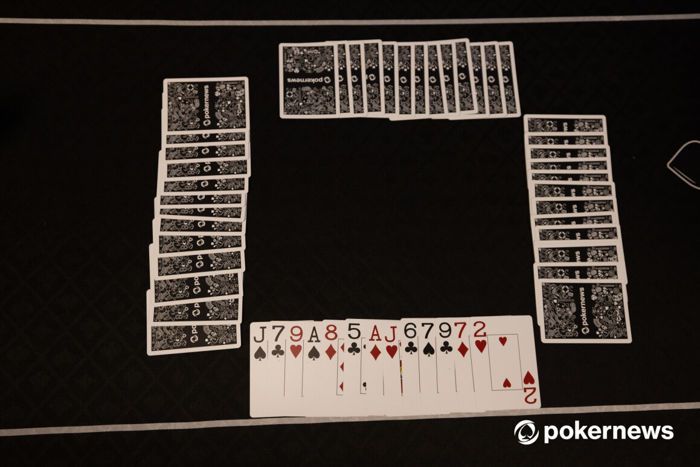Hearts Rules Explained: Beginners Guide

Hearts is a classic trick-taking card game where the objective is to avoid certain cards that carry penalty points. Played with a standard 52-card deck, it typically involves four players, each dealt 13 cards. With its simple yet strategic gameplay, Hearts offers a blend of skill, observation, and calculated risk-taking.
While the concept of Hearts is simple, it's important to master all the rules so you can truly understand the game and take your skill to the next level. Here is your guide explaining all the rules of Hearts.
The Basics of Hearts Rules
Hearts is a captivating card game played with four players and a standard 52-card deck. The primary goal is to avoid capturing certain cards that carry penalty points, specifically Hearts and the Queen of Spades. At the beginning of each round, players pass three cards to an opponent, strategically aiming to improve their own hand while burdening others.
During gameplay, the player holding the 2 of Clubs starts the first trick, and subsequent players must follow suit if possible. However, if a player lacks a card of the lead suit, they can play any card, including Hearts. The trick is won by the player who played the highest-ranking card of the lead suit or the highest-ranking Heart, if Hearts have been broken (played in a previous trick).
Scoring involves accumulating penalty points from captured Hearts and the Queen of Spades. Hearts count as one point each, while the Queen of Spades holds 13 points. The objective is to strive for the lowest score possible or to 'shoot the moon,' capturing all Hearts and the Queen of Spades to force opponents into gaining points.
Mastery in Hearts revolves around skillful card management, strategic passing, and perceptive gameplay to avoid accumulating penalty points. This delightful game rewards both calculated risk-taking and astute observation, offering an engaging experience for players aiming to minimize points and outmaneuver opponents.
Setting Up the Hearts Game
To set up a game of Hearts, all you need is a standard 52-card deck. The game typically involves four players, each dealt 13 cards. However, variations exist, allowing for three or six players, adjusting the card distribution accordingly.

The deck is shuffled thoroughly and then dealt clockwise, one card at a time, until each player has their allotted 13 cards. Variations may introduce slight rule differences, like playing with fewer or additional players, which might influence passing directions or the number of cards passed.
In a standard four-player game, players pass three cards to an opponent before each round, allowing for strategic card management and shaping of hands. The passing direction can change per round: clockwise, counterclockwise, or alternate directions as agreed upon.

While the core gameplay remains consistent, variations may include different scoring systems, passing rules, or even the inclusion of additional penalty cards, adding depth and diversity to the game.
Setting up Hearts is straightforward, requiring only a standard deck of cards and a clear understanding of the number of players and card distribution. Variations in player count or passing directions can inject exciting twists, offering diverse gameplay experiences while still preserving the essence of this captivating card game.
Card Ranking in Hearts
In Hearts, card ranking plays a pivotal role in determining the outcome of each trick. Cards are ranked in a standard manner, where the highest card of the lead suit wins the trick unless a Heart or the Queen of Spades is played.
Hierarchy of Cards:
- Hearts: These carry points; the higher the Hearts captured, the more penalty points accumulated.
- Queen of Spades: The most potent card, worth 13 points on its own.
- Other Suits: Cards in the other suits follow traditional ranking, with Ace being the highest, followed by King, Queen, Jack, and descending numerals.
Special Rules
- Breaking Hearts: Hearts cannot be led in the first trick unless the player has only Hearts in their hand or Hearts have been played in a previous trick.
- Shooting the Moon: Capturing all Hearts and the Queen of Spades in a single round allows a player to 'shoot the moon,' usually resulting in a significant score reduction for that player's opponents.
Understanding card hierarchy and strategic use of high-ranking cards like Hearts and the Queen of Spades are crucial in Hearts. While the game follows standard card rankings for the most part, these unique rules significantly influence gameplay and scoring.
Gameplay Rules for Hearts
Playing a Round
Hearts consists of multiple rounds, each comprising a series of tricks. A trick starts with a player leading a card, and others must follow suit if possible. However, if a player doesn't have cards of the lead suit, they can play any card, including Hearts. The player with the highest-ranking card of the lead suit or the highest Heart (if Hearts have been broken) wins the trick and leads the next one.
Passing Cards and Strategy
Before each round, players pass three cards to an opponent. The direction of passing can vary: clockwise, counterclockwise, or alternating. This passing phase is strategic; players aim to offload high cards, strengthen their hands, or hinder opponents. Passing effectively can greatly impact a player's prospects in a round.
Shooting the Moon
An ambitious strategy in Hearts is 'shooting the moon'. If a player captures all Hearts and the Queen of Spades in a single round, they 'shoot the moon,' usually resulting in other players gaining points instead. While risky, achieving this feat can lead to a substantial score reduction or even a win.
These fundamental rules structure the gameplay in Hearts, offering a blend of skill and strategy. Mastering the intricacies of passing cards, managing high-ranking cards, and strategically winning or avoiding tricks significantly influences success in this captivating card game.
Scoring System in Hearts
Detailed Explanation
In Hearts, the scoring revolves around avoiding certain cards that carry penalty points: Hearts and the Queen of Spades. Each Heart captured during a round counts as one point, while the Queen of Spades holds a considerable 13 points on its own. The primary objective is to minimize points; the player with the lowest score at the game's end wins.
Common Variations
Variations in scoring exist across different Hearts games. Some variations include different scoring for the Queen of Spades, assigning a higher or lower value. Some might introduce variations in the Hearts' value or implement scoring rules for shooting the moon, where the player gains or loses specific points for the feat.
Understanding the scoring system is fundamental in Hearts, as it drives players' strategies and decisions throughout the game. Successful gameplay involves not only minimizing the points collected from Hearts and the Queen of Spades but also considering the scoring nuances and variations specific to the chosen ruleset.
Variations of Hearts Rules
Popular Variations
Hearts boasts several intriguing variations, each offering a unique spin on the classic game. One notable variation involves altering the scoring system, adjusting points for Hearts or the Queen of Spades. Some variants introduce different passing methods or change the number of cards passed. Additionally, variations may tweak the rules surrounding shooting the moon, making it more or less advantageous.
Unique Rules in Different Versions
Among the diverse versions, some variants may adopt specialized rules. For instance, some versions might incorporate penalties for specific card plays or introduce alternative conditions for shooting the moon. Variations could also revolve around the passing phase, allowing different card distributions or altering passing directions for each round.
Exploring the variations in Hearts not only adds depth to the game but also provides diverse gameplay experiences. Understanding the different rules and nuances in these variations can lead to an enriched gaming experience, offering players a chance to enjoy Hearts in various ways beyond the standard ruleset.
Mastering the rules of Hearts lays the foundation for an exciting and strategic gaming experience. Key elements like card ranking, gameplay, passing strategies, and scoring intricacies shape each round.
Remember, Hearts is not merely about avoiding certain cards but also about skillful tactics and adapting strategies based on opponents' moves. Embrace the passing phase as a chance to enhance your hand and hinder adversaries. By understanding the scoring system and aiming for minimal points, you'll pave the way to victory.
Hearts Rules FAQs
What are the basic rules of the Hearts card game?
In Hearts, players aim to avoid certain cards, mainly Hearts and the Queen of Spades, to minimize points. Players must follow suit if possible, and the highest-ranking card of the lead suit or the highest Heart, once Hearts are broken, wins the trick.
How do you set up a game of Hearts?
Setting up Hearts requires a standard 52-card deck. Four players participate, and each receives 13 cards. Players pass three cards to an opponent before each round, strategically enhancing their hands.
What is the ranking of cards in Hearts?
In Hearts, the cards rank traditionally, with Aces being high. Hearts hold points—each one is worth a point, and the Queen of Spades carries a hefty 13 points.
Can you explain the scoring system in Hearts?
The scoring in Hearts revolves around accumulating as few points as possible. Hearts and the Queen of Spades carry penalty points. Hearts are worth one point each, while the Queen of Spades is 13 points.
Are there variations in the rules of Hearts?
Yes, there are several variations in Hearts. Variants may alter scoring, passing methods, or introduce different rules for shooting the moon, providing diverse gameplay experiences.
